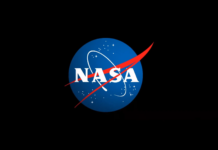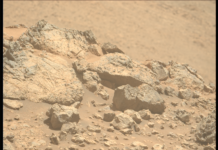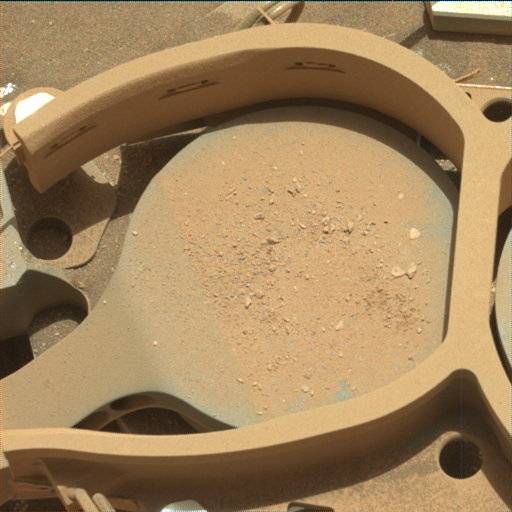Curiosity Rover’s Latest Scientific Observations: A Closer Look at Mars’ Surface
The Mars Curiosity Rover, part of NASA’s Mars Science Laboratory mission, continues its groundbreaking exploration of the Martian surface. In its latest series of activities, the rover has been diligently conducting engineering maintenance before diving into a series of remote scientific observations. These observations are crucial in helping scientists understand the geological and chemical composition of Mars, paving the way for future missions and potential human exploration.
Morning Routine and Initial Observations
Curiosity’s daily routine starts with essential engineering tasks, ensuring that all systems are functioning optimally. Once these housekeeping chores are completed, the rover turns its attention to its primary mission: scientific discovery. One of the first targets of the day is "Peeler Lake," a dark, nodular rock formation that appears more resistant to erosion compared to nearby rocks.
To analyze Peeler Lake, Curiosity employs its ChemCam instrument, which uses Laser-Induced Breakdown Spectroscopy (LIBS). This technique involves firing a laser at the target to create a plasma, which is then analyzed to determine the rock’s chemical composition. Alongside this, the rover captures detailed images using its Mast Camera (Mastcam). By comparing Peeler Lake to another nodular formation known as "Kings Canyon," scientists hope to gain insights into their relative compositions and understand the processes that led to their formation.
Comparative Analysis with Kings Canyon
Kings Canyon, another area of interest, also features nodular formations. Curiosity’s ChemCam takes high-resolution Remote Micro-Imager (RMI) photos of the drill tailings from Kings Canyon. Drill tailings are the material left behind after the rover drills into the Martian surface, and analyzing these can provide valuable data about the subsurface composition.
The comparison between Peeler Lake and Kings Canyon is crucial. By studying the similarities and differences in their compositions, scientists can infer the historical environmental conditions that shaped these formations. This information is vital for reconstructing Mars’ geological history and assessing its potential to have supported microbial life.
Exploring Gediz Vallis and Sky High Lake
Curiosity’s observations extend beyond Peeler Lake and Kings Canyon. The rover also captures RMI mosaic images of Gediz Vallis, a significant geological feature on Mars. Gediz Vallis is believed to be an ancient river valley, and studying it can provide clues about the planet’s hydrological past.
Additionally, the rover examines "Sky High Lake," a rock with an intriguing gray coating. The Mastcam images of this target aim to reveal more about the rock’s surface composition. The gray coating could indicate the presence of specific minerals or weathering processes, offering further insights into the Martian environment.
CheMin Inlet and Sample Delivery
Before delivering a sample to the Chemistry and Mineralogy (CheMin) instrument, Curiosity captures an image down the CheMin inlet. CheMin is designed to identify and quantify the minerals in the Martian soil and rock samples. This step is critical for ensuring that the sample is properly positioned for analysis, which will provide detailed information about its mineralogical composition.
Afternoon Activities and Panorama Imaging
After a well-deserved nap to conserve energy, Curiosity resumes its activities in the late afternoon. One of the highlights is the creation of a large Mastcam mosaic of the "Milestone Peak" channel deposits. This mosaic involves stitching together multiple images to create a detailed panorama of the area. The late afternoon lighting is particularly beneficial as it enhances the visibility of layers and textures in the Martian terrain, allowing scientists to study the geological features in greater detail.
In addition to the Milestone Peak mosaic, Curiosity continues to add frames to its ongoing 360-degree panorama. This comprehensive view of the rover’s surroundings helps scientists to contextualize their observations and plan future exploration routes.
Routine Observations with DAN and REMS
Throughout the mission, Curiosity also conducts regular observations using the Dynamic Albedo of Neutrons (DAN) instrument and the Rover Environmental Monitoring Station (REMS). DAN is used to detect hydrogen in the form of water or hydrated minerals, providing data on the presence of subsurface water. REMS, on the other hand, monitors the Martian weather, including temperature, humidity, and atmospheric pressure. These routine observations are essential for understanding the current environmental conditions on Mars.
The Importance of Curiosity’s Mission
The Curiosity Rover’s mission is a testament to human ingenuity and the quest for knowledge. Each observation and analysis conducted by the rover brings us one step closer to understanding Mars’ past, present, and potential for future habitability. The data collected not only enhances our scientific understanding but also informs the planning of future missions, including those that may involve human exploration.
Good to Know: Laser-Induced Breakdown Spectroscopy (LIBS)
For those unfamiliar with the term, Laser-Induced Breakdown Spectroscopy (LIBS) is a type of atomic emission spectroscopy that uses a highly focused laser pulse to create a plasma on the surface of the sample. When the laser hits the sample, it vaporizes a small amount of material, forming a plasma. The light emitted from this plasma is then analyzed to determine the elemental composition of the sample. This technique is particularly useful in planetary exploration because it allows for remote analysis of rocks and soils without the need for physical sample collection.
Reactions and Reviews from the Scientific Community
The scientific community continues to be impressed by the wealth of data provided by the Curiosity Rover. Many researchers have praised the rover’s ability to conduct detailed geological and chemical analyses remotely. Dr. Abigail Fraeman, a planetary scientist at NASA’s Jet Propulsion Laboratory, remarked, "Curiosity’s findings are continually reshaping our understanding of Mars. The detailed compositional data and high-resolution imagery provide invaluable insights that are crucial for future exploration."
Conclusion
Curiosity’s ongoing mission on Mars exemplifies the relentless pursuit of knowledge and the innovative spirit of space exploration. Through meticulous scientific observations and analyses, the rover is uncovering the secrets of the Red Planet, one rock at a time. As we continue to study Mars, each discovery brings us closer to answering fundamental questions about the planet’s history and its potential to support life. The Curiosity Rover remains a beacon of human curiosity and a testament to our desire to explore the unknown.
For more Information, Refer to this article.


































